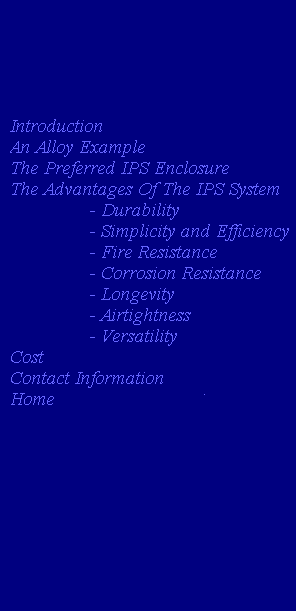
Introduction
The Interlocking Panel System (IPS) is a patented, building assembly system that uses ribbed alloy panels that interlock with one another with tongue and groove joints and similar joints to create highly-durable, high-quality, completely-interlocked building structures, including building enclosures, building floors, exterior building walls, and interior building walls. These panels, then, are not lightweight composite panels made of sheet metal that typically measure 4-feet by 8-feet across, which have little resistance to the winds of tornadoes and hurricanes. Rather, they are solid, ¼”-thick, cast panels with dimensions that do not exceed 12 inches in any direction, which weigh as much as 25 pounds each. The reason for the ¼” thickness of these panels, then, is two-fold. For one, panels that measure as much as 12”-square need to be ¼”-thick in order to meet the flow requirements of the precision-casting industry. Second, at a ¼"-thick, these panels could handle almost any destructive force imaginable, man-made or natural, and that is an absolutely true statement.
Now, there are three good reasons for the small size of these cast panels. For one, small-sized panels can be precision-cast, whereas larger parts cannot, and this means that high-strength, noncorrodible alloys can be cast to form these small panels, whereas larger parts cannot be cast with these special alloys. Second, the precision-casting process that would be used to cast these panels would produce joints so tight that it would be highly difficult for water or ice to even enter their seams, which would thereby permanently eliminate structural problems due to freezing and thawing cycles. Furthermore, very little air would have the capacity to pass through these precision-cast joints. Finally, panels that measure no more than 12 inches in any direction can be placed into a building assembly easily without the need for complex rope, cable, or lever assemblies, which only slow the progress of projects when precise results are required.
Now, these panels use only two types of joints, and can be fabricated with three sides or four sides, with their faces having no curvature, a single-curvature, or a double-curvature. When the construction of an IPS structure is complete, then, any type of sprayable insulation can be sprayed upon the interior of the building enclosure for fire-resistance, if necessary, or heat-resistance, if necessary, or both. In addition, whether an IPS structure has been sprayed with insulation or not, if desired, it can always be sprayed with a coating of gypsum for finishing purposes. These panels, then, would interlock in a way that would give maximum structural integrity to an enclosure, enough, in fact, for the enclosure to span distances of 1,000-feet or more.